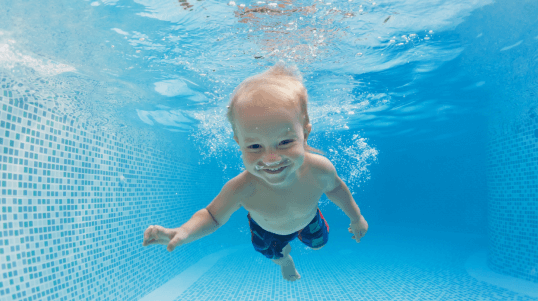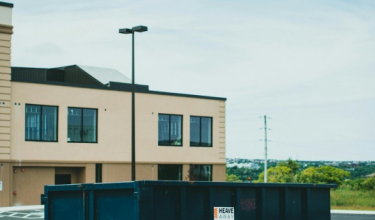When Can Babies Start Swimming? Your Guide to Water Safety and Fun

For many Aussie families, summer means spending time in and around the water. From backyard pools to the beach and local swimming holes, it’s a huge part of our culture. So, it’s natural for new parents to be keen to introduce their little one to the joys of swimming. But the question on everyone’s mind is: when can babies start swimming safely?
It’s a topic with a lot of advice floating around, so it’s essential to separate the myths from the facts. The consensus from paediatricians and swimming safety experts is that there isn’t one single “right” age, but there are some key guidelines to follow to ensure your baby’s first experiences in the water are both safe and enjoyable.
The Short Answer: When Can My Baby Start Swimming?
Most paediatricians and health organisations, including the American Academy of Pediatrics, recommend waiting until your baby is at least six months old before taking them into a public or chlorinated pool. This recommendation isn’t arbitrary; it’s based on a few key developmental and health factors that are crucial for your baby’s safety.
Why Wait Until Six Months? It’s About Temperature Regulation
A baby’s body isn’t as good at regulating its temperature as an adult’s. They can get cold very quickly in a pool that feels perfectly comfortable to you. Waiting until they are around six months gives their body a better chance to manage temperature changes, reducing the risk of them getting too cold.
Building a Stronger Immune System for Infant Swimming
Young babies have a more delicate immune system. Public pools, while generally safe, contain a range of bacteria and chemicals that a newborn’s system might not be ready for. Waiting until six months allows their immune system to mature a little, making them less susceptible to infections.
Head and Neck Control is Crucial for Baby Swimming Lessons
Around the six-month mark, most babies have developed good head and neck control. This is a game-changer in the water. A wet baby can be very slippery, and having a bub who can hold their head up well makes it much easier and safer for you to support them in the water.
The Benefits of Early Water Introduction
While there are reasons to wait until a baby is at least six months old, introducing them to water early has a host of benefits that go far beyond just fun.
- Drowning Prevention: Research has shown that children who participate in swimming lessons between the ages of one and four have a significantly lower risk of drowning. While babies won’t be doing laps, early water familiarisation is a crucial first step in building a foundation of water safety.
- Water Confidence: Getting a baby comfortable and confident in the water from a young age can prevent the development of a fear of water later on. The more positive experiences they have, the more likely they are to feel at ease in the pool or ocean as they grow up.
- Physical Development: Swimming is a fantastic full-body workout. The resistance of the water helps to strengthen muscles, improve coordination, and develop motor skills. It’s also a great way to bond with your baby and burn off some energy!
What to Look for in a Baby Swimming Program
When you’re ready to get your baby started, not all swimming programs are created equal. Here’s what you should be looking for:
- Parent-and-Child Classes: For babies and toddlers, a “parent-and-child” or “water familiarisation” class is the way to go. These classes focus on play and building confidence, not on teaching formal swimming strokes. You’ll be in the water with your baby, learning how to safely hold them, sing songs, and play games that help them get used to the water.
- Qualified Instructors: Look for a swim school with qualified instructors who have experience teaching infants and toddlers. They should be patient, nurturing, and have a strong focus on water safety.
- Warm Water: A heated pool is a must for babies. Look for a pool with a water temperature of at least 32 degrees Celsius. Any colder, and your baby will get chilly very quickly, making the experience unpleasant for everyone.
Beyond the Pool: Water Safety at Home
Remember, swimming lessons are just one piece of the water safety puzzle. Drowning is a leading cause of accidental death for young children, so constant supervision is non-negotiable. Always supervise your baby in or around water, whether it’s in the bathtub, a paddling pool, or the main pool. Additionally, if you have a backyard pool, make sure it is fully fenced with a self-latching gate that is regularly checked and maintained.
Finally, while a pool cleaner can help keep your water sanitised and safe from contaminants, it’s no substitute for vigilant supervision. As a parent, learning CPR and first aid is one of the most important things you can do. In the event of a water emergency, a few minutes can make all the difference.
The First Dip: Tips for a Great Experience
- Keep it Short: For your baby’s first few swims, keep the session brief—around 10-15 minutes. This prevents them from getting too tired or cold.
- Pack the Essentials: Bring a warm towel or hooded wrap to bundle them up as soon as they get out of the water. A baby-safe rashie and swim nappy are also a must.
- Choose the Right Time: Don’t take your baby swimming when they are tired or hungry. A well-fed and rested baby is more likely to have a positive experience.
- Follow Your Baby’s Cues: Every baby is different. Some will love the water from the first splash, while others might take a little longer to warm up. If your baby is fussing or showing signs of discomfort, don’t force it. Try again another day.
Conclusion: Making Water Fun and Safe for Your Baby
In conclusion, while there’s no single answer to when can babies start swimming, waiting until at least six months is the recommended approach for health and safety reasons. From there, enrolling in a parent-and-child class is a wonderful way to introduce your little one to the water. It’s not just about teaching them to swim; it’s about fostering a lifelong love of the water while instilling the critical lessons of water safety that every kid needs to learn. And to keep that water clean and safe, consider investing in the best pool cleaner for your home, ensuring your pool is always a sparkling and healthy environment for everyone.



